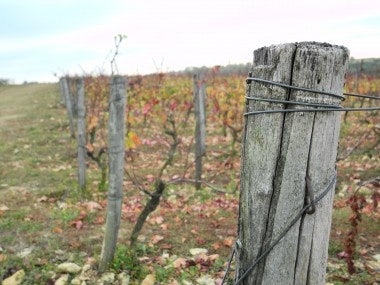What Do Changing Tastes Hold In Store For Bordeaux, Burgundy Winemakers?#

When it comes to wine, the burgeoning Chinese oenophile's single-minded preference for high-end French wines has become the stuff of legend and even caused global ripples in recent years, with buying habits in Hong Kong and mainland China causing steep price fluctuations for top wines like Château Lafite Rothschild. (Which saw a China-led bubble inflate over the past three years and deflate over the past several months.) Yet -- owing to an expanding palate, increasingly diverse market, greater competition from New World winemakers and decreasing popularity of wine as an investment vehicle -- France's "premier crus" are no longer selling at the same "premier" price points as last year.
Since last August, the Liv-ex 50 Wine Index has lost one-third of its value, with the index's founding director, Justin Gibbs, telling CNBC: "The market today is showing all signs of extreme stress. The bid-offer ratio in the market is near-historic lows, the spreads are near-historic highs and the returns on wine investments over the last five years are near-historic lows.”
Chiming in, Florence Cathiard, co-owner of Chateaux Smith Haut Lafitte -- producer of the prestigious grand cru Classé, of which 80 percent is exported -- remained unsure whether we'd see a rebound akin to the skyrocketing prices of 2009-2010. Said Cathiard, "The world is not doing so well. Last year I had to lower my prices by 41 percent. We have to be very attentive to the market."
Ruling out bumper crops as the reason for the high-end wine slowdown (winemakers like Cathiard have said they are confident that "the quality of the vintage is nice”), some industry experts point more towards China than Europe. Last year, Bordeaux exported some 58 million bottles of wine, worth more than 300 million euros (US$370 million), to China, a more than 100 percent increase year-over-year. Increasingly reliant on China's 35 percent share of the Bordeaux import market, as well as the investments made by Chinese companies and individual entrepreneurs in Bordeaux vineyards and chateaux, French winemakers like Cathiard and major exporters are awakening to the reality that Chinese buying habits and tastes are shifting quickly.

Considering Chinese drinkers consumed 156 million cases of wine last year, a 20 percent rise over 2010 that saw the country overtake Great Britain as the world's fifth-largest wine market, they're certainly not turning away from wine. Rather, they're now spoiled for choice and understand that there's a whole world of wine outside of France. With a growing number of American, Australian, Italian, Spanish, Chilean, and domestic Chinese winemakers attacking the lucrative mid-range, and a growing number of middle-class drinkers looking for more than the usual big, bold French red, times look to get somewhat tougher for the premier French names in China. (Which have also had their brand equity hit hard in China by rampant counterfeiting, leading Lafite to include the Prooftag security system on all bottles labelled since February 2012.)
As Cathiard admitted:
The Chinese are not buying the same, they are very clever, they have tremendous fashion for bottled wine. In the beginning they bought everything. Small, the not very good wines, and the really big names. They now understand better, (the) great culture for wine and food, now they know what's in their glass.
However, for French winemakers, changing tastes in China may not necessarily result in a bitter end. Some see the glass half full, with the trend pointing towards a more refined palate, demand for higher-quality wine (rather than just prestige labels) and better value for the money. Ultimately benefiting wine-making regions that have, to date, been pushed away by Bordeaux and Burgundy -- among them Loire, Champagne and Languedoc-Roussillon -- stand to gain from the inroads made in China by their fellow countrymen.
As Loire Valley winemaker Guillaume Roussy of Chateau-Midouin told Jing Daily last year, potential customers in China have quickly gone from asking, “What country are your wines from?” to specific questions about terroir, appellation and food pairings. Though markets like the United States are more reliable and developed, with established demand, pricing structures and logistics, Guillaume noted, China is “more exciting and more dynamic” for smaller wineries.
